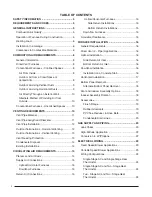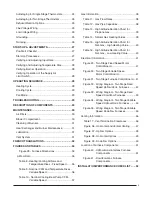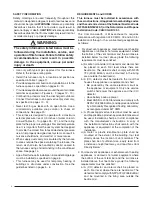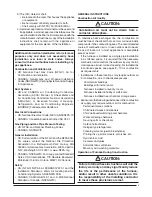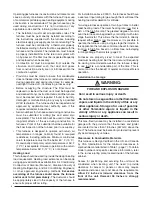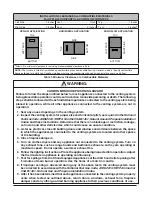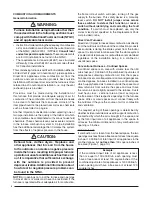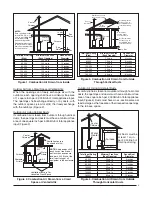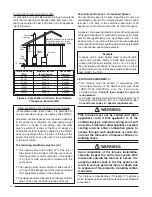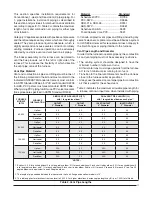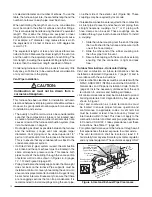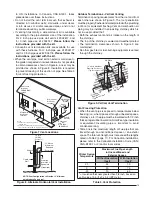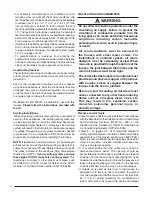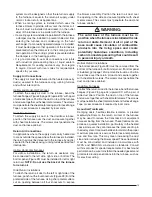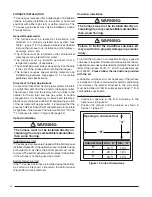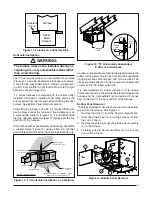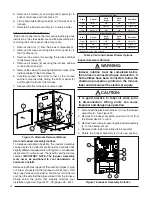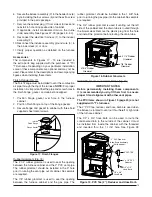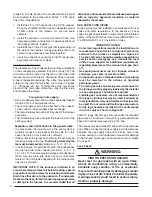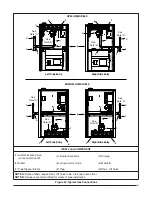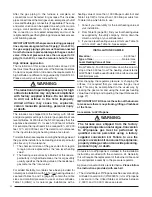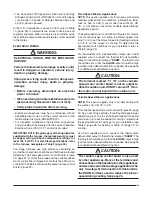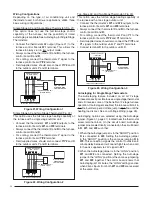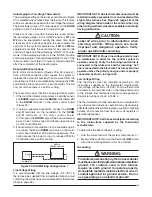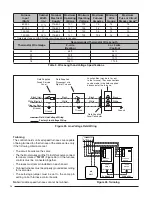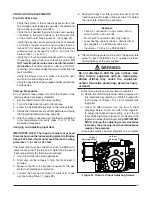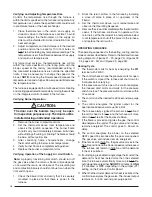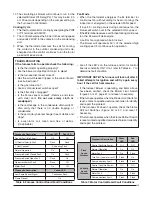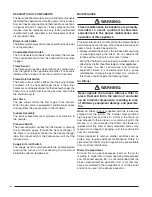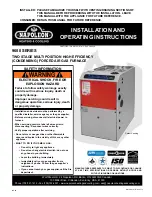
15
system must be designed so that the return air supply
to the furnace is equal to the return air supply under
normal, indoor return air applications.
• When a cooling system is installed which uses the
furnace blower to provide airfl ow over the indoor coil,
the coil must be installed downstream (on the outlet
side) of the furnace or in parallel with the furnace.
• If a cooling system is installed in parallel with the furnace,
a damper must be installed to prevent chilled air from
entering the furnace and condensing on the heat
exchanger. If a manually operated damper is installed,
it must be designed so that operation of the furnace is
prevented when the damper is in the cooling position
and operation of the cooling system is prevented when
the damper is in the heating position.
• It is good practice to seal all connections and joints
with industrial grade sealing tape or liquid sealant.
Requirements for sealing ductwork vary from region
to region. Consult with local codes for requirements
specifi c to your area.
Supply Air Connections
The supply air must be delivered to the heated space by
duct(s) secured to the furnace casing, running full size
and without interruption.
Upfl ow and Horizontal Furnaces
To attach the supply air duct to the furnace, bend the
furnace fl anges (Figure 28, page 34) upward 90° with a pair
of wide duct pliers. Position the duct on top of the furnace
and secure together with sheet metal screws. The screws
must penetrate the sheet metal casing and furnace fl ange.
Tape or seal all seams if required by local code.
Downfl ow Furnaces
To attach the supply air duct to the downfl ow furnace,
position the furnace over the duct and secure together
with sheet metal screws. The screws must penetrate the
duct and furnace cabinet.
Return Air Connections
In applications where the supply ducts carry heated air
to areas outside the space where the furnace is installed,
the return air must be delivered to the furnace by duct(s)
secured to the furnace casing, running full size and without
interruption.
Upfl ow Horizontal Furnaces
For upfl ow installations, the return air ductwork may
be connected to the left side, right side, or bottom. The
bottom panel (Figure 28) must be installed for left or right
return air.
NOTE: Do not use the back of the furnace
for return air.
Side Return Installations
To attach the return air duct to the left or right side of the
furnace, punch out the four knockouts (Figure 28) from the
preferred side of the furnace. Using sharp metal cutters,
cut an opening between all four knockouts to expose
the blower assembly. Position the return air duct over
the opening in the side and secure together with sheet
metal screws. The screws must penetrate the duct and
furnace cabinet.
WARNING:
The solid base of the furnace must be in
position when the furnace is installed with side
return air ducts. Removal of all or part of the
base could cause circulation of combustible
products into the living space and create
potentially hazardous conditions, including
carbon monoxide poisoning that could result
in personal injury or death.
Bottom Return Installations
The bottom panel (Figure 28) must be removed from the
bottom of the furnace for bottom return air. If bottom panel
is installed, go to page 15 for removal instructions. Position
the furnace over the return air duct and secure together
with sheet metal screws. The screws must penetrate the
duct and furnace cabinet.
Downfl ow Furnaces
To attach the return air duct to the furnace, bend the furnace
fl anges (Figure 28, page 34) upward 90° with a pair of
wide duct pliers. Position the duct on top of the furnace
and secure together with sheet metal screws. The screws
must penetrate the sheet metal cabinet and furnace fl ange.
Tape or seal all seams if required by local code.
Acoustical Treatments
Damping ducts, fl exible vibration isolators, or pleated
media-style fi lters on the return air inlet of the furnace
may be used to reduce the transmission of equipment
noise eminating from the furnace. These treatments can
produce a quieter installation, particularly in the heated
space. However, they can increase the pressure drop in
the duct system. Care must be taken to maintain the proper
maximum pressure rise across the furnace, temperature
rise and fl ow rate. This may mean increasing the duct
size and/or reducing the blower speed. These treatments
must be constructed and installed in accordance with
NFPA and SMACNA construction standards. Consult
with local codes for special requirements. For best sound
performance, be sure to install all the needed gaskets and
grommets around penetrations into the furnace, such as
for electrical wiring


